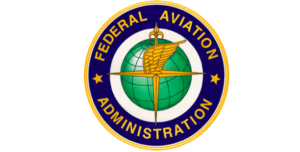 The FAA Task Group 1 (TG1), part of the FAA Drone Advisory Committee, received negative press this week as the Washington Post reported that group meetings have become secretive, with commercial interests over-represented.
The FAA Task Group 1 (TG1), part of the FAA Drone Advisory Committee, received negative press this week as the Washington Post reported that group meetings have become secretive, with commercial interests over-represented.
The FAA Drone Advisory Committee (DAC) is a group of industry stakeholders brought together by the FAA in order to advise them on drone regulation policies. Intended to be a diverse group with differing viewpoints, the DAC includes representatives from manufacturers, software and platform providers, unmanned operators, manned aviation operators, airports, research facilities, local governments, and drone advocacy groups. (A full roster of committee members can be found here.)
The DAC has three subcommittees, known as Task Groups. These Task Groups have 3 distinct missions. TG2 is responsible for helping to prioritize “access to airspace” – i.e., those operations not currently allowed that could be addressed through regulation and procedure. TG3 is responsible for “funding” – thinking up ways that the FAA might help pay for drone integration.
TG1 – the subject of the article, titled “A U.S. drone advisory group has been meeting in secret for months. It hasn’t gone well.” – is responsible for determining “roles and responsibilities.” The mission sounds less critical than it is. In this case, “roles and responsibilities” for drone regulation come down to a central question of whether or not state and local governments should play a role in making drone laws.
While the FAA has tried for several years to establish their absolute control over the national airspace (NAS), this hasn’t worked well. State and local governments continue to pass restrictive laws – often poorly researched and badly written – that create negative consequences for commercial and recreational operators. Two recent congressional proposals, the Drone Federalism Act and the Drone Innovation Act, have brought the issue to the forefront. In an effort to mitigate the damage, the FAA appears to have softened its stance on local and state drone regulation in recent months. They now appear to be trying to establish a collaborative approach with local governments, which would reserve some regulations only for the federal government but allow some flexibility to regulate certain aspects of drone operation at the state and local level.
It’s an issue that could have significant repercussions for the drone industry, and one with a potential for contention and disagreement. Drone manufacturers and drone industry members, in general, are not in favor state regulation, resulting in what FAA Administrator Michael Huerta once referred to as a “patchwork quilt” of drone laws. State lawmakers hope to preserve their rights to govern in accordance with local requirements.
Whatever the results of TG1’s findings, they now appear to have been called into question by the Washington Post article. Accusations of secrecy and unfair influence by industry heavy hitters may delegitimize the group’s recommendations, adding more time to the process of drone integration and a final determination on drone regulations.

Miriam McNabb is the Editor-in-Chief of DRONELIFE and CEO of JobForDrones, a professional drone services marketplace, and a fascinated observer of the emerging drone industry and the regulatory environment for drones. Miriam has penned over 3,000 articles focused on the commercial drone space and is an international speaker and recognized figure in the industry. Miriam has a degree from the University of Chicago and over 20 years of experience in high tech sales and marketing for new technologies.
For drone industry consulting or writing, Email Miriam.
TWITTER:@spaldingbarker
Subscribe to DroneLife here.







[…] made the change clear: native governments may have some position in drone regulation. (See our earlier article for extra particulars – and the official assertion of their duties will be discovered right here. […]